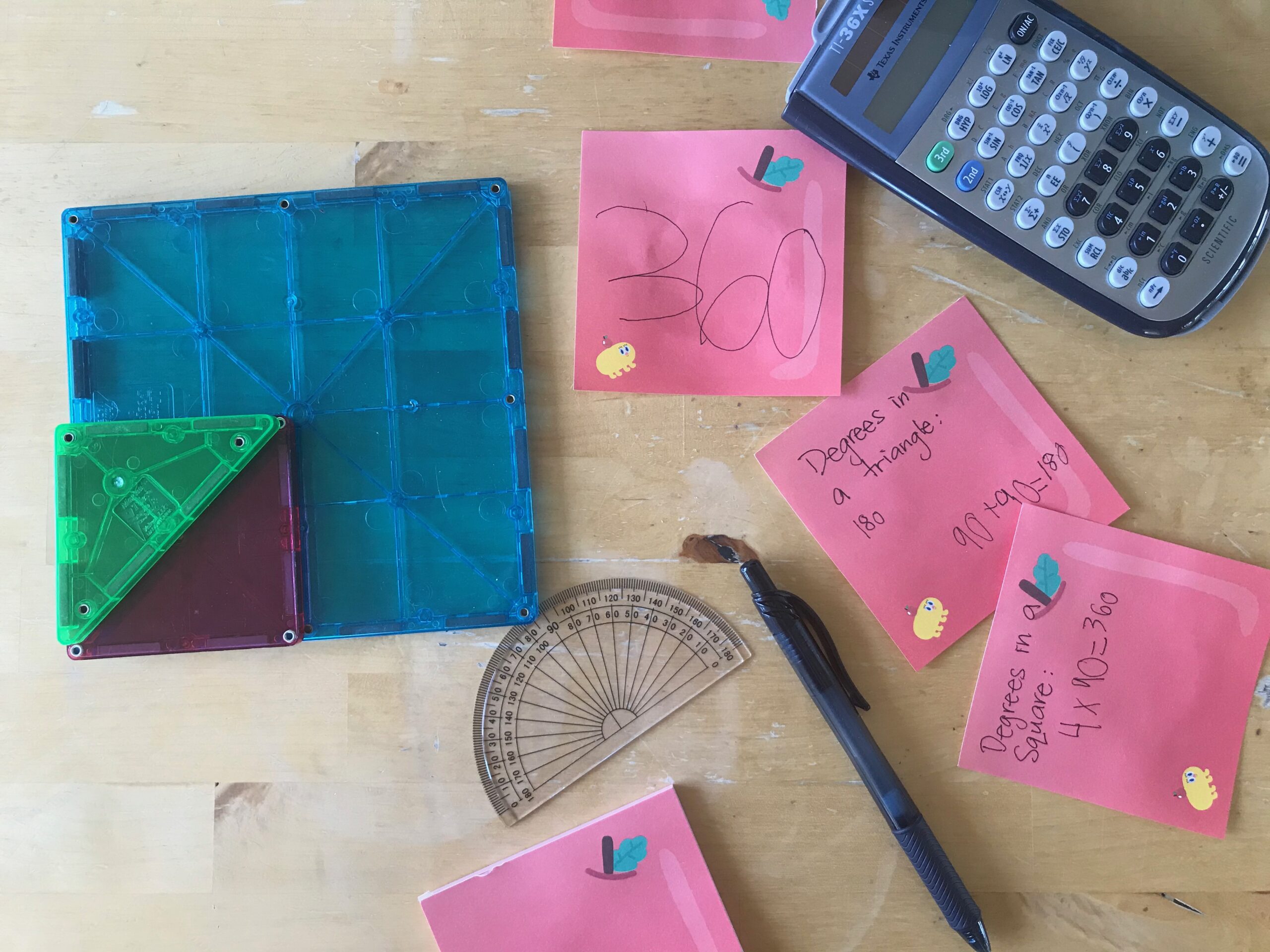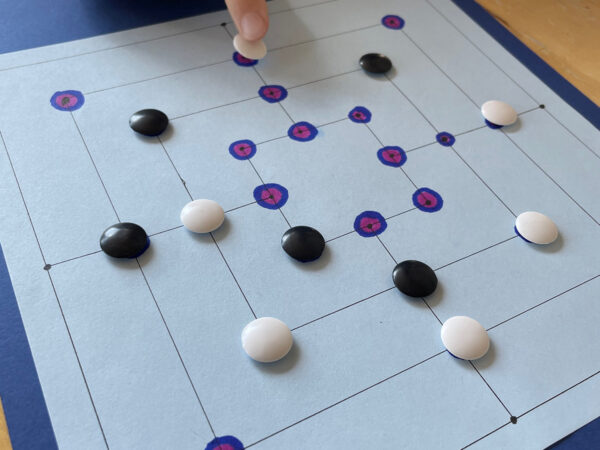Side-walks and runways came first. Square pieces snapped together in long flat strips on the ground, perfect routes for Hot Wheels and mini construction trucks. Gradually, the snap snap snap gave rise to 3D buildings — cubes stacked up into skyscrapers, with balconies defying gravity. Then came the invention of spaceships and battle pods, as triangles came together to form giant tetrahedrons, octahedrons, and other structures, capable of holding passengers inside their hatch doors.
My son has been playing with Magnatiles for a long time. They’re an old favorite. So I thought it would be fun to take them out for some geometry work. I wanted him to practice using a protractor to measure the angles of different tiles, and sum the angles in different shapes. I also let him use the calculator to make the activity more fun. Sometimes it’s nice to take a break from mental math, and the more tools, the better, around here!
First, he measured and summed the angles of the square magnatile: 360 degrees. Then I asked him to sum the angles of a triangle, intending him to use the same process. Instead, he snapped the right triangle onto the square, and wrote down: 90 + 90 = 180.
It turns out that all of that time he spent playing with Magnatiles gave my son an immediate, intuitive understanding of the relationships between shapes and their angles. I wasn’t expecting him to make these connections, but it came naturally, without prodding. In hindsight, this makes sense. All those hours spent assembling complex 3D shapes from the tiles required manipulating and experimenting with the relationships of the shapes to one another.
In other words, all of his play and experimentation was beginning to coalesce in the form of generalized mathematical ideas and patterns.
Now, of course, this is in no way a formal proof that the sum of the angles of a triangle is 180 degrees. But it is proof of the power of play to prepare children for bigger ideas and more formal academic exploration. Whether it’s playing with Magnatiles, hunting for bugs, or putting on spectacular theatrical performances for family members and stuffed animals, children’s play builds a solid foundation for future learning.





